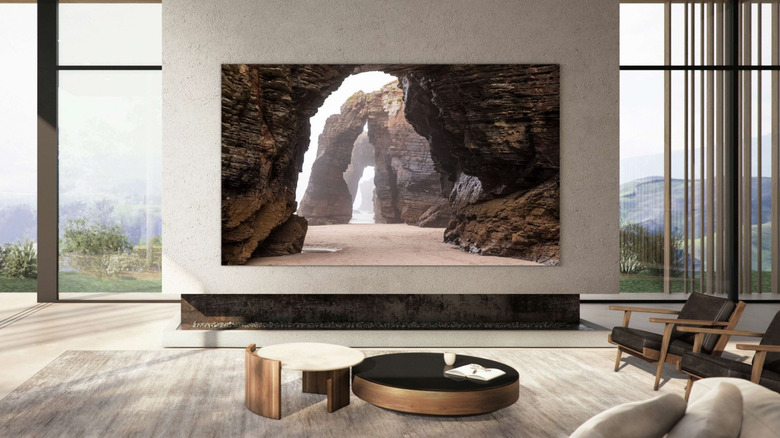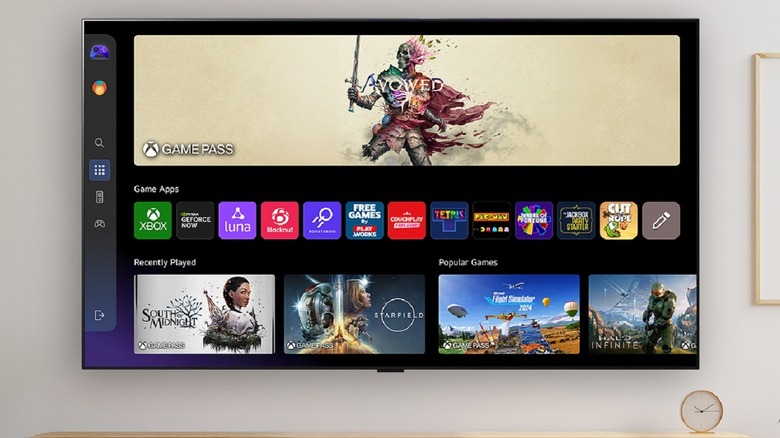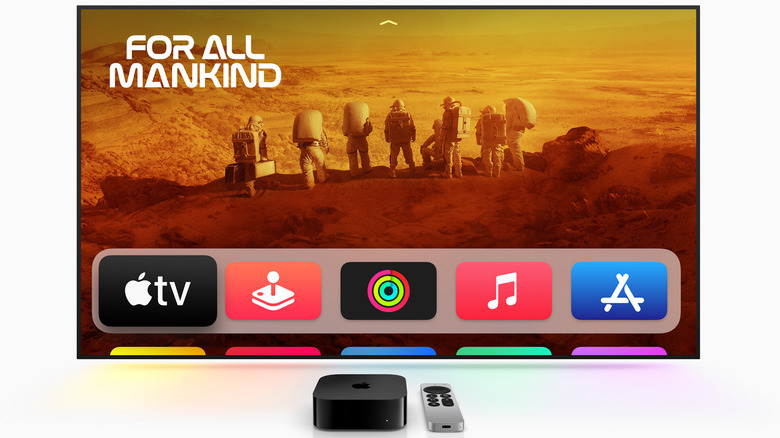No Smart Home Hub? You Can Use Your TV Instead
If you've decked your home out with smart LED lightbulbs, thermostats, and cameras, you're likely to find yourself looking for a centralized way of managing all of them at once. Smart home hubs, like Amazon Echo, offer exactly that by communicating with each device via the internet. They can be pretty useful, particularly if you have a large number of smart gadgets at home. But it's still yet another device to buy, meaning more money to spend.
Luckily, you might already have something you can use to control your smart devices: Your TV. Select TVs are already able to work like a smart home hub for Google Home with just a few settings tweaks. Or, you might be able to turn it into a hub using some other smart home items you already own. This is particularly handy if you use a different smart technology service like Alexa or HomeKit.
Using your TV as a hub also helps to visualize your whole smart home setup. A lot of smart hubs don't have displays, operating with voice controls and speakers instead. While this can be useful when giving your hub voice commands, it's not so good when you want to check up on the video feed from your doorbell. It also helps to give you an overview of your whole home's ecosystem all at once.
Google Home on your TV transforms it into a smart home hub
Any TV that lists Google Home on its Home Hub menu can be set up as a smart home hub. You'll just need a reliable wi-fi connection and your phone ready for scanning QR codes. Eligible devices are LG smart TVs running at least Android 14, or otherwise any TV that uses a Google Chromecast device. For it to work, the TV needs to have Google Home set up properly, and every device needs to be connected to the same Wi-Fi. Then, you need to sign in to your Google Account and accept any privacy policies and terms of service.
Once you're logged in, you can finish setting your TV up as a smart home hub by connecting to Google Home, assigning it to a room, and logging into (or setting up) your Google Home account. Now, you should be able to use your TV as a smart home hub. You might need to allow access to your devices on an individual basis before it works smoothly.
Other smart home ecosystems can use your TV, too
Google Home isn't the only option for using your TV in your smart home setup either. Some Samsung TVs are integrated with SmartThings, negating the need to buy a separate smart hub, and are compatible with a wide range of smart home devices like Ring doorbells and Philips Hue Smart Bulbs. Or, you could grab some other peripherals that you might have lying around already to convert your TV into a smart hub setup, like the Apple TV 4K or a FireTV Stick.
Roku TV devices, such as the Streaming Stick, are also compatible with their smart home range, making it possible to keep an eye on any cameras or video doorbells directly from your TV. The Roku smart home range is pretty extensive, but it doesn't tend to offer much compatibility with other devices, so this setup is better if you've already bought into more of their ecosystem. If your smart home is a little more eclectic, then you'll need to explore other options.
A lot of smart home gear works using Matter, meaning they can interact with each other efficiently even if they're made by different brands. So, if you're the owner of a diverse range of gadgets, you should be able to get most of your devices working together. Look out for the Matter logo on any device documentation or on its website. Don't despair if it isn't Matter-enabled, though, as your smart home tech still might be cross-compatible, so it's worth trying just in case.


